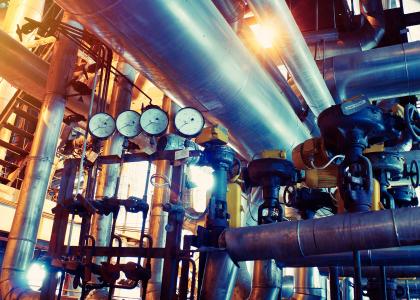Ever wondered just how much energy we consume to power our economy? To keep our buildings working, machines humming, and wheels running? Are we really energy smart as a country?
ACEEE tracks a lot of data that could be used to help answer these questions. Today, we are unveiling a new web page that brings together many of these key numbers to demonstrate our country’s overall energy efficiency. We chose metrics that measure trends from the perspective of major energy users. The metrics can also serve as a gateway to investigate the nuances of energy efficiency across the economy.
Since efficiency is a relative concept, we can only describe a product or system as being more or less efficient than itself or another. We say that an LED bulb is more energy efficient than an incandescent bulb because it consumes less electricity to produce the same amount of light. In your home, you might find mobile phones, electric toothbrushes, hair dryers, heating and air conditioning units, cooking stoves, washing machines, and various electronic appliances. Each of these have their own measure of efficiency, just like the LED bulb.
Similarly, to understand the energy efficiency of say, the residential sector in the United States as a whole, we can measure the average energy consumed per household or per unit floor area. From year to year, this value may fluctuate for many reasons, such as changes in weather, the size of homes, the number of appliances in homes. Thus, when looking at an entire sector, it is not easy to isolate improvements in energy efficiency from other reasons we might use more or less energy.
We picked metrics covering residential and commercial buildings, state adoption of building codes, energy savings from appliance standards, industry energy intensity, combined heat and power (CHP) capacity, personal and freight transport energy intensity, and the use of public transit, to represent the efficiency of US buildings, industry, and transportation. We also included national- level indicators on energy productivity (gross domestic product per unit of energy use), public spending on energy efficiency, and savings from energy efficiency programs. The figure below shows that US energy productivity has been climbing steadily; that is, the US economy is becoming more efficient.
We also tracked indicators on oil consumption, net imports, and energy-related emissions in the country. Overall, these metrics capture most of the energy use in the United States. Similar metrics illustrate and compare national energy efficiency profiles of other countries.
Almost all our data for the United States show improvement in 2015 over 2014. Energy productivity stepped up by 3.3% and per-capita energy use declined by 1.6%. Average energy efficiency in residential buildings improved by 4.3%, and in commercial buildings by almost 2%. However, we caution that some of these improvements may be due to milder than normal weather in 2015. Industry and transportation metrics also show progress. Industrial energy efficiency is continuing to improve in small steps. Millions more recorded trips are being taken by public transportation every year. Average fuel economy of new passenger vehicles and light trucks has improved by 1.6%. Annual net oil imports declined by 8.7% and annual energy-related carbon dioxide emissions were lower by 2.5%.
There are a few metrics for which we used projections or did not have the latest data. These metrics will be updated when new information becomes available. Trends from previous years still indicate that we are making modest progress in these areas. Savings from electricity programs improved by a significant 5.6% in 2014 over 2013, and the largest improvement was from natural gas efficiency programs, in which energy savings rose by 35% in 2014 over 2013.
To enable a smarter, cleaner, and less expensive energy system, the United States must continue to make progress on efficiency. In the face of increasing demand for energy services globally, governments, not just at the national level, but also at the regional and local levels, should take action to improve the energy efficiency of their economies. And focusing on energy efficiency starts with understanding where and how energy is used.
For more information, explore ACEEE’s new US energy efficiency metrics webpage.
Data Points is a blog series focusing on the graphs and other images that tell the energy efficiency story.



